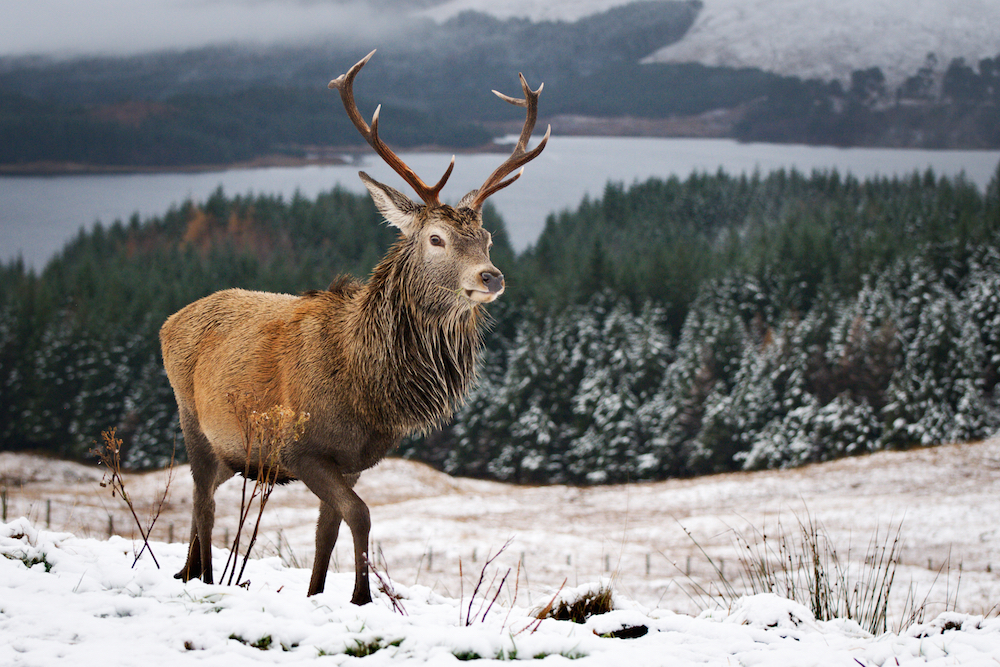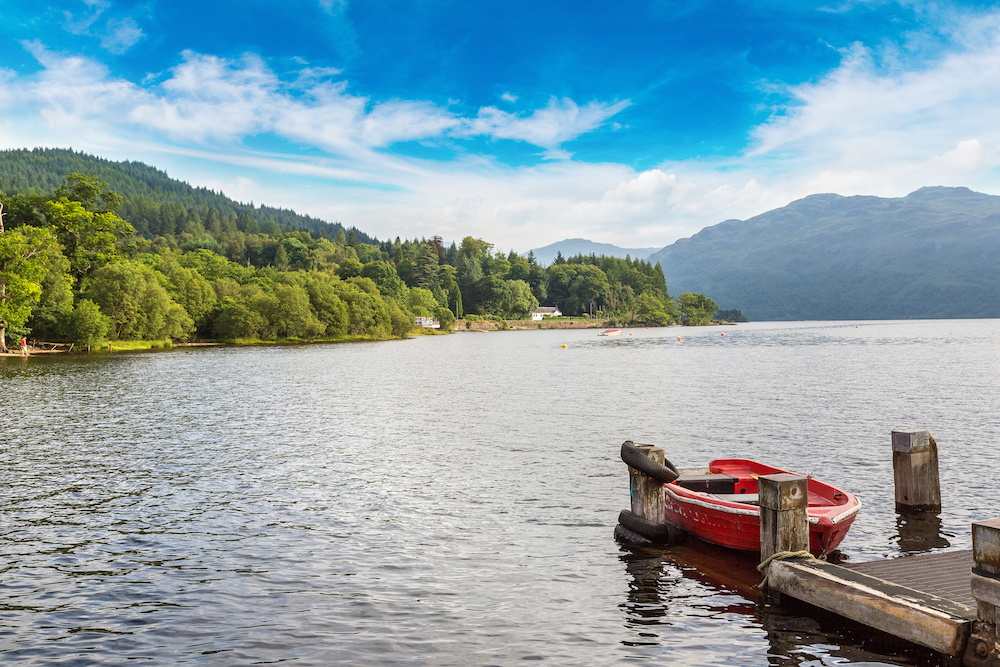Nestled in the stunning Scottish Highlands, Loch Lomond and The Trossachs National Park is a popular destination for outdoor enthusiasts and nature lovers alike. But with its ever-changing climate and powerful landscape, it’s important to prepare for any weather conditions when visiting this beautiful loch. In this post, we’ll take a closer look at the weather in Loch Lomond throughout the year, so you can plan your trip accordingly and make the most of your time in this breathtaking region.

An overview of Loch Lomond’s seasons
Loch Lomond and The Trossachs National Park experience four distinct seasons, each bringing its own unique weather patterns and attractions. To make the most of your visit, it’s essential to be prepared for the weather in each season. So here are some practical tips to help you plan your trip accordingly.
Winter
Winter (December to February) brings a special kind of beauty to Loch Lomond. The landscape is transformed by frost and sometimes snow, creating a serene winter wonderland. Average temperatures range from lows of 1°C to highs of 7°C. Winter sports enthusiasts can enjoy skiing and sledging in nearby resorts, while those seeking a cosy retreat can unwind in a luxury lodge at Loch Lomond Waterfront.
Winter in Loch Lomond can be quite cold, so pack plenty of warm clothing, including thermal layers, hats, scarves, and gloves. It’s also essential to have sturdy footwear for walking on icy surfaces. Be aware that some trails and attractions may be closed during this time, so check in advance for any closures or restrictions. Lastly, always monitor the weather forecast and be prepared for potential snowfall or icy conditions.
Spring
Spring (March to May) brings a refreshing change to Loch Lomond with milder temperatures and longer daylight hours. The landscape begins to awaken with bursts of colour as flowers bloom, and wildlife becomes more active. This is the ideal time for hiking and exploring the surrounding trails. Temperatures generally range between lows of 6°C and highs of 12°C. Spring is the driest season, with around 11 days of rainfall per month.
As the weather starts to warm up, be sure to pack layers. The mornings and evenings can be chilly, but the afternoons can get quite warm. It’s a good idea to bring a waterproof jacket, as showers are common. Don’t forget to bring sturdy hiking boots, as the trails can be muddy. Additionally, make sure to have insect repellent on hand, as bugs are more active during this time.
Summer
Summer (June to August) is the peak tourist season, with warmer temperatures and extended daylight hours. We see average lows of 9°C and highs of 19°C. The loch is at its busiest, attracting visitors from near and far. Outdoor activities such as boating, swimming and picnicking are popular choices, as the weather is generally pleasant and ideal for water-based adventures.
With warmer temperatures and longer daylight hours, it’s important to stay protected from the sun. Pack sunscreen, hats and sunglasses to shield yourself from harmful UV rays. It’s also advisable to bring a reusable water bottle to stay hydrated throughout the day. Since summer is the peak of tourist season, it’s a good idea to book accommodation and activities in advance to avoid disappointment.
Autumn
Autumn (September to November) transforms Loch Lomond into a stunning canvas of golden hues. The cooler temperatures bring a crispness to the air, and the forests come alive with vibrant shades of red, orange and yellow. It is a magical time to witness the changing colours of foliage and take a scenic walk through the tranquil surroundings. Average temperatures range from lows of 4°C to highs of 13°C. This is also the rainiest season, with around 13 days of rainfall per month.
As the temperatures start to cool down, be prepared for chilly mornings and evenings. Layering is key during this season. It’s a good idea to bring a mix of warm and lightweight clothing. Don’t forget to pack waterproof outerwear, as rain showers are common. Autumn is also the mating season for midges, so make sure to have midge repellent handy to avoid any discomfort.

No matter what time of year you visit Loch Lomond and The Trossachs National Park, you’re in for a real treat. Take a look at our Loch Lomond lodges and book your stay today. Be sure to check the MET office for the local weather forecast and pack accordingly. The weather can be unpredictable at times, so it’s always nice to be prepared for any changes that may occur. By following these practical tips for each season, you’ll be well-prepared to embrace the weather and make the most of your visit.
Get in touch













